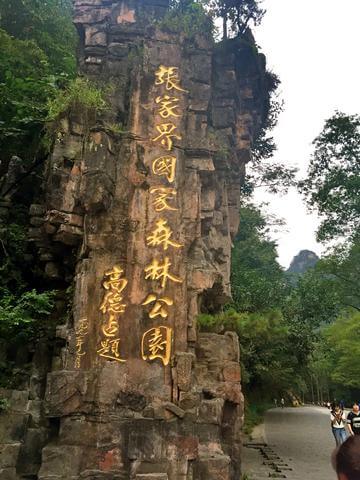

Establishment Time: In 1982, it was the first national forest park in China.
Geographical Location: It is located at 29°9′39″ north latitude and 110°24′58″ east longitude.
Area: It covers an area of 4,810 hectares.
Belonging Region: It is part of the Wulingyuan Scenic Area, which was listed as a World Heritage Site by UNESCO in 1992.
Strange Peaks and Rocks: It is famous for its quartz sandstone peak forest landform. There are more than 3,000 iconic sandstone pillars and peaks, and most of the peaks are over 200 meters high. These columnar rocks are the world-renowned features of the park. They are not typical limestone erosion columns but are composed of quartz sandstone and formed by physical erosion due to abundant rainfall.
Deep Canyons and Gullies: There are deep canyons and gullies in the park, such as the Jinbianxi Canyon. The stream winds among the steep and strange peaks and dense woods. The water is clear, waterfalls cascade down, and there are also numerous strange rock landscapes.
Forest Vegetation: The forest coverage rate is high, and the vegetation is rich and diverse. About 98% of the area is covered by vegetation. There are 720 species of plants in 102 families, including rare plants like the dove tree (Davidia involucrata), which is known as a "living fossil" and can be traced back to the Quaternary glacial period.
Cave Wonders: There are more than 40 caves, such as the Huanglong Cave. The stalactites, stalagmites and other landscapes in the cave are strange and in various shapes, and the underground karst cave landscapes are rich and diverse.
Yuanjiajie Scenic Area: Located in the northern part of the park, it is famous for the prototype of the floating mountain in the movie "Avatar" - the Southern Sky Column (also known as Hallelujah Mountain). The heights of the peaks and stone pillars are similar, forming a unique mountain platform, from which a spectacular panorama can be enjoyed.
Tianzi Mountain Scenic Area: It occupies an important position in the park and is famous for its magnificent peaks and sea of clouds landscapes. From the viewing platform on the top of the mountain, you can overlook the beautiful scenery of numerous peaks standing like a forest and clouds and mists lingering, as if you were in a fairyland. You can also enjoy the beautiful sunrise and sunset scenes.
Huangshizhai Scenic Area: Also known as Huangshizhai, it is about 1,200 meters above sea level and is the largest viewing platform in the park. You can see various strange peak and rock landscapes. There is a saying that "If you don't visit Huangshizhai, it's a waste of your trip to Zhangjiajie."
Jinbianxi Scenic Area: Located in the eastern part of the park, it is named after the Jinbian Rock. It is 7.5 kilometers long. The stream is clear, and there are many scenic spots along the way, such as the Jinbian Rock, the Eagle Guarding the Whip, and the Wenxing Rock. Walking along the stream, you can enjoy the beautiful natural scenery and rich ecological landscapes.
Yangjiajie Scenic Area: It has unique peak wall landscapes. The peaks are like city walls stretching continuously, with a magnificent momentum. There are also strange landscapes like the Natural Great Wall, which gives people a strong visual impact.
Transportation Facilities: There are environmentally friendly vehicles shuttling inside the park, which is convenient for tourists to travel among various scenic spots. The external transportation is also convenient. It is close to Zhangjiajie city. Moreover, Zhangjiajie has a railway station and an airport, and tourists can reach it by various means of transportation.
Sightseeing Facilities: It has the world's highest outdoor elevator - the Bailong Elevator, which is 326 meters high and can quickly send tourists to the top of the mountain, saving climbing time and energy. There is also the Zhangjiajie Grand Canyon Glass Bridge, which spans 430 meters and is 300 meters high. It is the world's longest and highest pedestrian glass bridge, providing tourists with a unique high-altitude viewing experience.
Source of Artistic Creation: The landscape of Zhangjiajie is one of the important sources of inspiration for Chinese landscape paintings. Its strange peaks and rocks, sea of clouds, forests and other landscapes have been presented in countless ancient and modern paintings and photographic works.
Display of Ethnic Cultures: The area where the park is located is the settlement of ethnic minorities such as the Tujia people. Tourists can experience rich ethnic minority cultures here, such as the traditional songs and dances, architectural styles and folk customs of the Tujia people.
